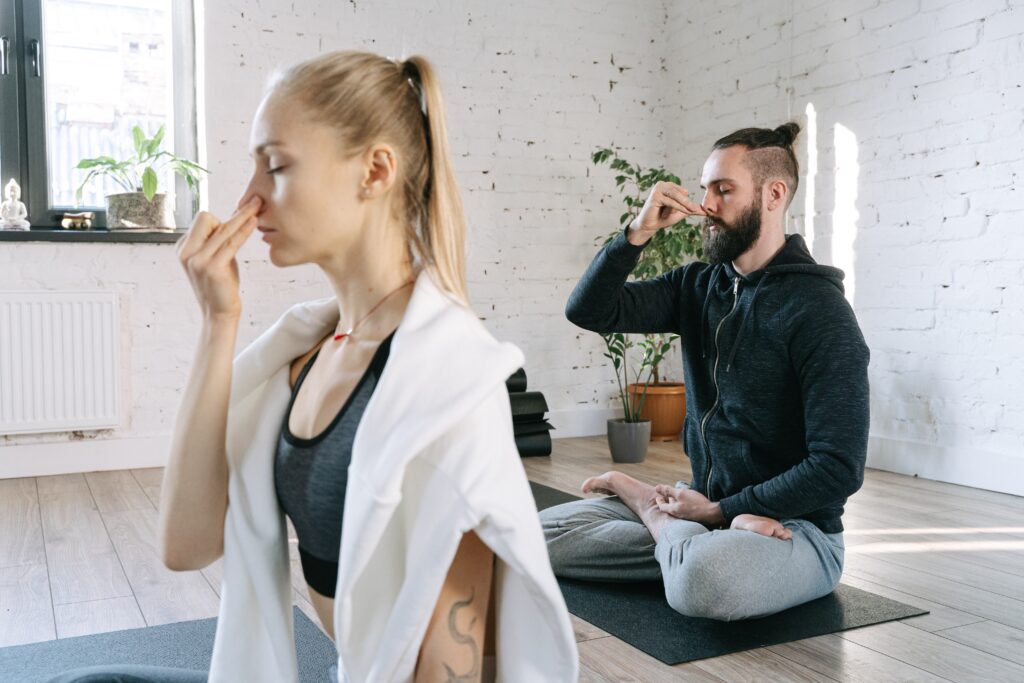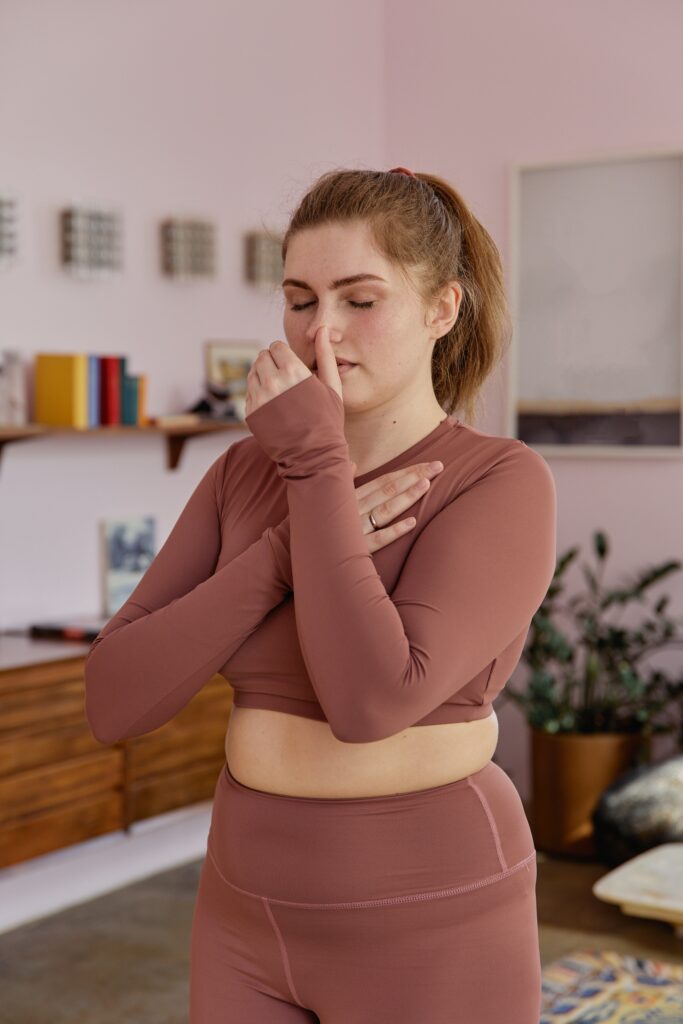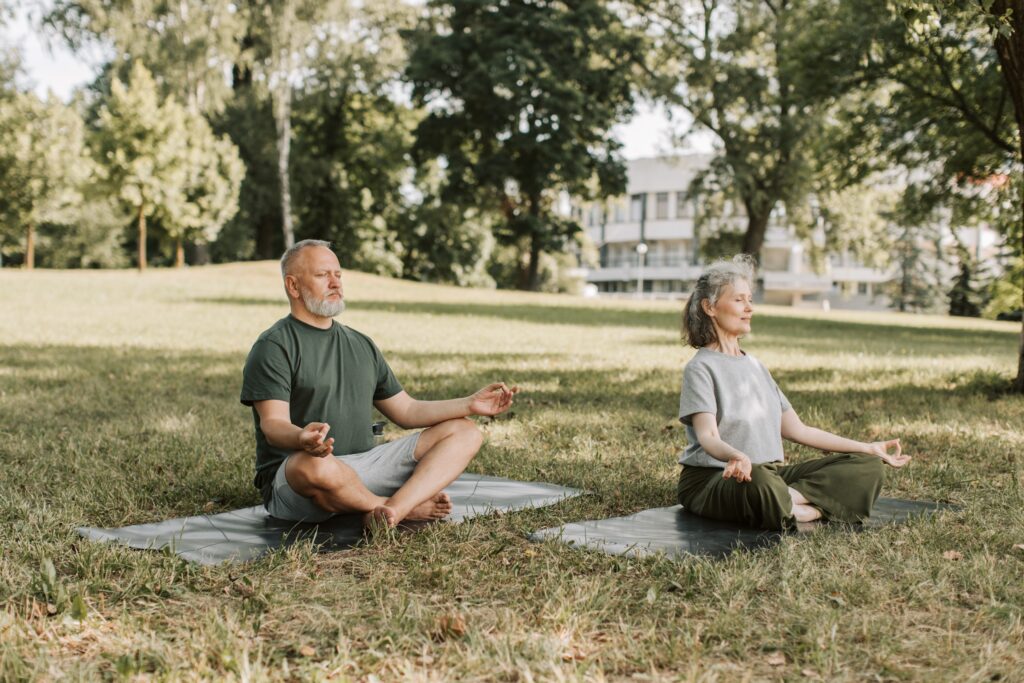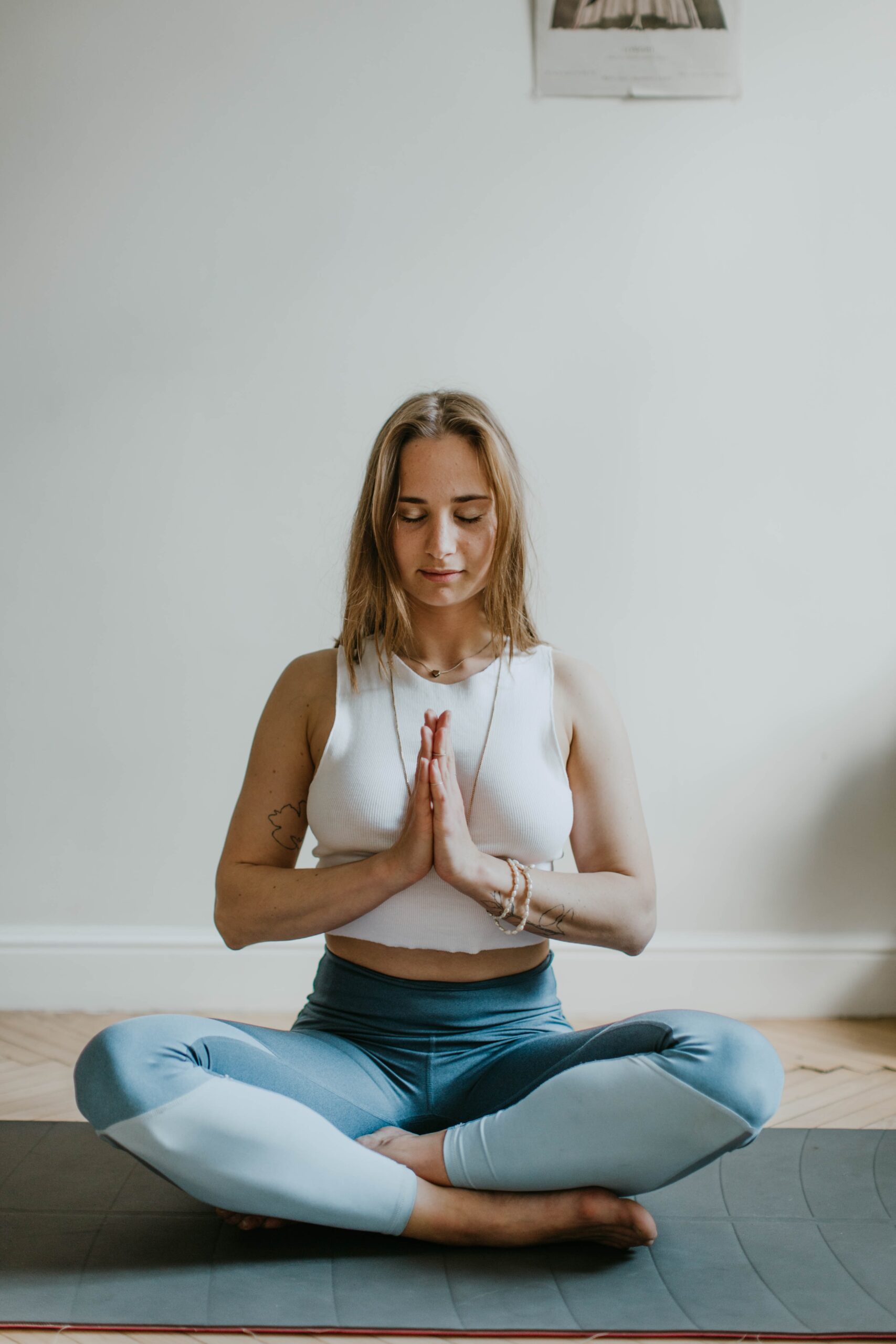Breathing Exercises for Anxiety
Breathing Exercises for Anxiety
Read Disclaimer
Do you frequently feel the effects of anxiety? Do you frequently look for practical strategies to relax and soothe your nerves? You could find that practicing proper breathing techniques is the key to finding inner calm and serenity. In this article, we’ll dig into the realm of breathing exercises for anxiety and examine how these straightforward yet effective routines may give you back control over your feelings and peace among the craziness of daily life.

Table of Contents
1. Introduction
2. Understanding Anxiety and Its Effects
3. The Power of Breath
4. Deep Diaphragmatic Breathing
5. Box Breathing Technique
6. 4-7-8 Breathing Method
7. Alternate Nostril Breathing
8. Breath Counting Exercise
9. Progressive Muscle Relaxation with Breathing
10. Morning and Evening Breathing Rituals
11. Incorporating Breath Awareness into Daily Life
12. Benefits of Regular Practice
13. Precautions and Considerations
14. Seek Professional Advice
15. Conclusion
16. FAQs
Introduction
In today’s fast-paced world, anxiety is a familiar companion that affects people of all ages and socioeconomic backgrounds. The good news is that there are many ways to deal with worry, and one of the simplest and most powerful ones includes the breath—the basic foundation of life. Breathing exercises may be a potent anxiety remedy, providing a means to settle down and gain clarity of thought.
Understanding Anxiety and Its Effects
Restlessness, racing thoughts, an elevated heart rate, and a sense of impending doom are some signs of anxiety. It can interfere with daily living and make even the smallest chores seem difficult. The parasympathetic nervous system, which promotes relaxation, is activated through breathing exercises by focusing on the body’s stress reaction.

The Power of Breath
You can always rely on your breath as an anchor to keep you rooted in the present. You may more easily cross the choppy waves of worry by using the power of breath.
Deep Diaphragmatic Breathing
This fundamental breathing method calls for deep, rather than shallow, breathing into the diaphragm. It encourages calmness, lessens tension, and improves blood flow to the brain. Find a relaxed sitting or sleeping position, then place one hand on your chest and the other on your abdomen to practice. Deeply inhale through your nose, feeling your belly rise as your lungs fill with air. Allow any stress to leave your body by taking a deep, full exhale.
Box Breathing Technique
This breathing method, sometimes referred to as square breathing, uses a straightforward 4×4 pattern: inhale for a count of 4, hold for a count of 4, exhale for a count of 4, and hold for a count of 4 again. Continue doing this cycle several times, paying attention to the rhythmic pattern and letting it calm your mind.

4-7-8 Breathing Method
The 4-7-8 approach developed by Dr. Andrew Weil is intended to quickly soothe the nervous system. Take a deep breath in through your nose for a count of four, hold it for a count of seven, and then let it out through your mouth for a count of eight. Your heart rate will slow down with this technique, which promotes relaxation.
Alternate Nostril Breathing
Incorporate this technique for balance and mental clarity. Use your right thumb to close off your right nostril and inhale deeply through your left nostril. Then close off your left nostril with your ring finger, release your right nostril, and exhale through it. Inhale through your right nostril, close it off, and exhale through your left. This completes one cycle.
Breath Counting Exercise
Use this practice to sharpen your attention. Deeply inhale, then slowly exhale while counting to one in your head. Continue to inhale and exhale while counting to “two.” Follow this pattern all the way up to 10, then reset to one. If your thoughts stray, softly refocus on the count.
Progressive Muscle Relaxation with Breathing
Breath awareness and muscular relaxation are combined. Tend a muscle group while inhaling, then release the tension by inhaling. Move up to your head starting from your toes.

Morning and Evening Breathing Rituals
Spend a few minutes each day beginning and ending with focused breathing. This routine helps you relax before bed and sets a good tone for the day ahead.
Incorporating Breath Awareness into Daily Life
By occasionally focusing on your breath throughout the day, you may practice mindfulness. You stay grounded and avoid spinning into anxiousness thanks to this behavior.
Benefits of Regular Practice
Regular breathing exercises can help you feel more relaxed overall, more focused, more able to control your emotions, and generally happier.
Precautions and Considerations
Although breathing exercises are normally harmless, stop doing them if you feel any pain or lightheadedness. If you have breathing problems or other medical disorders, speak with a healthcare expert.
Seek Professional Advice
It’s crucial to get advice from a mental health expert if you have severe anxiety or underlying health issues. Exercises to improve breathing can be a helpful addition to medical care.
Conclusion
A potent strategy for controlling anxiety and promoting calmness is breathing exercises. You may face life’s problems with better resiliency and inner calm by implementing these practices into your daily routine.
FAQs
1. Can I practice these techniques anywhere?
Absolutely. Breathing exercises can be done anywhere – at home, at work, or even during your commute.
2. How long should I practice each technique?
Start with a few minutes and gradually increase the duration as you become more comfortable.
3. Are these exercises suitable for children?
Yes, many breathing exercises are simple enough for children to practice and can be beneficial for their emotional well-being.
4. Can I combine different techniques?
Certainly. You can experiment with various techniques to find what works best for you in different situations.
5. Are instant results guaranteed?
While some people may experience immediate relief, consistent practice over time yields the best results.

Your point of view caught my eye and was very interesting. Thanks. I have a question for you.
This was a great read! Thanks for the helpful info.
Your article helped me a lot, is there any more related content? Thanks!
I don’t think the title of your article matches the content lol. Just kidding, mainly because I had some doubts after reading the article.
Thanks for sharing. I read many of your blog posts, cool, your blog is very good.
Can you be more specific about the content of your article? After reading it, I still have some doubts. Hope you can help me.
Can you be more specific about the content of your article? After reading it, I still have some doubts. Hope you can help me.
Your point of view caught my eye and was very interesting. Thanks. I have a question for you.
Thanks for sharing. I read many of your blog posts, cool, your blog is very good.
I don’t think the title of your article matches the content lol. Just kidding, mainly because I had some doubts after reading the article.
Thanks for sharing. I read many of your blog posts, cool, your blog is very good.
Your point of view caught my eye and was very interesting. Thanks. I have a question for you.
Your article helped me a lot, is there any more related content? Thanks!
Thank you for your sharing. I am worried that I lack creative ideas. It is your article that makes me full of hope. Thank you. But, I have a question, can you help me?
Can you be more specific about the content of your article? After reading it, I still have some doubts. Hope you can help me.
Your point of view caught my eye and was very interesting. Thanks. I have a question for you.
I don’t think the title of your article matches the content lol. Just kidding, mainly because I had some doubts after reading the article.
Your point of view caught my eye and was very interesting. Thanks. I have a question for you.
Can you be more specific about the content of your article? After reading it, I still have some doubts. Hope you can help me.
I don’t think the title of your article matches the content lol. Just kidding, mainly because I had some doubts after reading the article.
Your point of view caught my eye and was very interesting. Thanks. I have a question for you.
Một ưu điểm hoàn hảo tại nổ hũ Fun 88 đó chính là giao diện vô cùng bắt mắt, đẳng cấp cùng luật chơi rõ ràng. slot365 com Một số sản phẩm siêu hút chân cộng đồng cược thủ có thể kể đến như ăn khế trả vàng, kho kháu tứ linh, ngọn lửa chibi, long quy chi bảo,… TONY12-15
online casinos paypal
References:
hospitalityworldjobs.com
paypal casino
References:
https://jozhi.org/employer/paypal-casinos-2025-best-online-casinos-accepting-paypal/
paypal online casinos
References:
https://part-time.ie
usa casino online paypal
References:
https://internship.af
Auch, wenn man in einem Online Casino die Spiele kostenlos spielen kann (mit Ausnahme
des Live Casinos), so macht vor allem das Spielen mit echtem Geld den Reiz aus.
Die Umsatzrate gibt hierbei an, wie häufig ihr den Betrag bei den Casinospielen einsetzen müsst, um den Bonus
freizuspielen. Meist handelt es sich bei einem Bonus für Neukunden in online Spielhallen um einen Einzahlungsbonus.
Das wissen auch die Spielehersteller und die deutschen Online
Casinos. Ebenfalls könnt ihr Live Streams aus realen Spielbanken aus aller Welt nutzen und dem Live Dealer bei
der Arbeit zusehen und spielen. Dennoch hat man als deutscher
Spieler sehr gute Voraussetzungen für spannende und
gewinnbringende Echtgelspiele im Echtgeld Online Casino.
Doch gerade für Echtgeldspieler hat das neue Gesetz auch seine Schattenseiten.
Probiere Book of Dead im Casino – die Freispiele mit expandierendem Symbol können deine Gewinne auf ein ganz
neues Level heben! Plinko online ist dabei besonders beliebt und sorgt für jede Menge Spaß.
Zur Verfügung stehen euch tausende Spielautomaten und Jackpots, aber auch klassische Casinospiele
wie Blackjack und Roulette. Die besten Casinos in Deutschland eine Spielauswahl
von mehreren tausend Titeln. Neben den Casinos mit Lizenzen aus Curacao oder Malta Casinos online findet ihr unter
anderem Anbieter mit Lizenzen aus Gibraltar, Kahnawake oder Anjouan.
References:
https://s3.amazonaws.com/onlinegamblingcasino/big fish casino.html